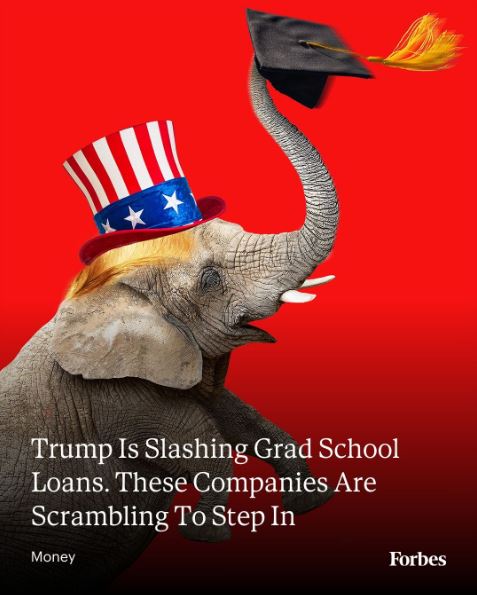
The Grad Plus Program Termination: Immediate Impact on Graduate Students
The recent abolishment of the Grad Plus program by the Trump administration has sent shockwaves through the graduate education community. The Grad Plus program, a cornerstone federal initiative, allowed graduate students to access substantial loans to fund their advanced studies with flexible repayment plans and relatively low interest rates. Its sudden termination, part of the sweeping legislative package informally dubbed the “One Big Beautiful Bill,” has left many students facing unexpected financial uncertainty.
Graduate students now find themselves in a precarious situation, as the withdrawal of federally backed financial aid creates a vacuum in the market for higher education funding. Historically, Grad Plus loans have served as a reliable safety net, ensuring that students could pursue their academic goals without immediately confronting prohibitive costs. With the program gone, both prospective and current graduate students must scramble to identify alternative funding sources to cover tuition, living expenses, and research-related costs.
Private Lenders Step Into the Breach
As federal loan programs vanish, a variety of private financial institutions are moving quickly to capitalize on this gap. These lenders are not only responding to heightened demand but are also actively designing products tailored to graduate students’ unique financial circumstances. Many are offering customized loan packages, variable interest rates, and flexible repayment schedules to appeal to borrowers previously dependent on Grad Plus loans.
Major private lenders, including SoFi, Sallie Mae, and Earnest, have publicly announced initiatives targeting the graduate loan market. These companies are leveraging technology-driven underwriting processes and data analytics to assess borrower risk more efficiently than traditional banks. The result is a new wave of financing solutions that aim to provide fast access to capital, albeit at potentially higher interest rates than federal loans.
The entrance of these private players signals a profound shift in the graduate financing ecosystem. While some students may benefit from quicker approvals and more personalized loan structures, there are concerns about predatory lending practices and the potential for substantial debt accumulation without federal protections. Students must navigate this landscape carefully, balancing the immediacy of available funds with long-term financial sustainability.
Financial Strategies for Graduate Students Post-Grad Plus
Given the abrupt end of the Grad Plus program, graduate students must explore alternative funding avenues to maintain their educational trajectories. Some potential strategies include:
- Private Loans: As discussed, lenders like SoFi, Sallie Mae, and Earnest offer tailored loan products. Students should compare interest rates, repayment terms, and borrower protections before committing.
- Employer Tuition Assistance: Certain companies provide tuition reimbursement programs for employees pursuing advanced degrees. While this option may require balancing work and study, it can significantly reduce out-of-pocket costs.
- Graduate Assistantships and Fellowships: Universities often offer teaching or research assistantships that provide tuition waivers and stipends. These opportunities are competitive but can offer substantial financial relief.
- Scholarships and Grants: Private organizations, non-profits, and professional associations frequently offer merit-based or need-based scholarships for graduate studies. Unlike loans, these do not require repayment.
- Income Share Agreements (ISAs): A growing trend in higher education financing, ISAs allow students to receive upfront funding in exchange for a percentage of future income. This model shifts some risk from the student to the lender and aligns repayment with post-graduate earnings.
Market Implications and Corporate Strategies

The elimination of Grad Plus loans has broader market implications beyond individual students. Private lenders see a potential multi-billion-dollar opportunity, prompting aggressive marketing campaigns and new product development. Companies are investing heavily in digital platforms to streamline application processes and enhance user experience, making it easier for students to access funds quickly.
Additionally, venture-backed fintech startups are experimenting with innovative lending models that integrate predictive analytics, AI-driven credit assessments, and flexible repayment schedules. This rapid innovation is creating a more competitive and diversified loan market, where students must evaluate multiple options and lenders must continuously adapt their offerings.
Traditional banks, recognizing the shift in demand, are also entering the space with enhanced loan products and loyalty incentives aimed at graduate borrowers. They often emphasize security, reliability, and established customer service, contrasting with some newer fintech approaches that prioritize speed and accessibility.
Potential Risks and Considerations
While private loans provide an essential bridge for graduate students, they carry inherent risks. Unlike federal loans, private lending agreements often lack features such as income-driven repayment, deferment options, and forgiveness programs. Students may face higher interest rates, stricter credit requirements, and less favorable repayment terms, which could exacerbate financial strain after graduation.
Financial advisors recommend that students perform thorough due diligence before committing to private loans. This includes examining the loan’s APR, repayment flexibility, origination fees, and any potential penalties for late or missed payments. Understanding the long-term financial impact is crucial, especially for graduates entering fields with unpredictable earnings trajectories.
Conclusion: Navigating a New Financial Landscape
The abrupt termination of Grad Plus loans has transformed the landscape of graduate education financing. As federal support recedes, private lenders are racing to fill the void, offering both opportunities and challenges for students nationwide. Navigating this evolving environment requires a strategic approach, careful evaluation of available options, and an understanding of potential risks and rewards.
Graduate students, universities, and financial institutions alike are adapting to a rapidly shifting ecosystem where private financing plays an increasingly prominent role. By staying informed, leveraging available resources, and exploring innovative funding mechanisms, students can continue to pursue advanced degrees despite the sudden disappearance of federal support.
Ultimately, this period marks a pivotal moment in higher education finance, reshaping how graduate programs are funded and how students approach long-term financial planning. The decisions made now—by students, institutions, and lenders—will have lasting implications for the future of graduate education in the United States.